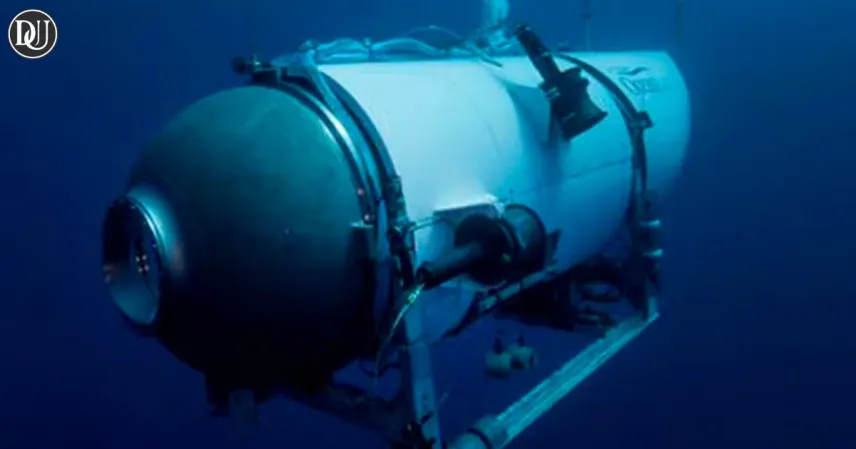The idea that a deep-sea submersible could just... vanish, then implode, you know, it still rattles me when I think about it. Honestly, it wasn't just some freak accident, it turns out. The official reports are pretty clear: that whole Titan submersible tragedy, the one that killed five people heading to the Titanic wreck last year, was totally preventable. Like, really preventable.
🌊 The Preventable Tragedy
It sounds almost unbelievable, doesn't it? A 2023 Coast Guard Marine Board of Investigation report basically said the disaster was OceanGate's fault because they ignored known safety risks. You'd think, for something going that deep, to literally crushing depths, every single safety measure would be overkill. But apparently not.
The Coast Guard, after their thorough investigation, they're not holding back. They point the finger directly at OceanGate. They're saying the company was fully responsible for the implosion. And they're not wrong, I mean, the sources make it pretty clear. It's not just some speculative theory, it's what the official investigation found. The thing about the CEO, Stockton Rush, is he was repeatedly warned about ignoring safety standards, specifically about the experimental carbon fiber hull. Someone even said he could've faced charges for it. Wild, right?
⚠️ Warnings Ignored, Risks Taken
This is where it gets really unsettling. People, experts even, apparently flagged concerns about the Titan's design and OceanGate's operational choices for years. Think about it: a submersible carrying people to the bottom of the ocean, designed with a hull material that many in the industry questioned, and it wasn't even certified by a classification society. That's like building a commercial airplane out of plywood and hoping for the best. It's a gamble on human lives, and that's just... infuriating. You'd think common sense, or at least industry standards, would kick in.
I've noticed this pattern sometimes, this push for innovation overriding basic safety, especially when there's a lot of money or a unique experience involved. But then it goes spectacularly wrong. This wasn't some unforeseen engineering flaw; it was a known vulnerability. The carbon fiber hull was the main issue, prone to buckling under immense pressure. Engineers, industry leaders, even a former OceanGate employee, they all raised red flags. It’s hard to wrap your head around how those warnings were just... brushed aside.
🤯 The Carbon Fiber Conundrum
So, the material itself, carbon fiber. You know, it's strong in tension, great for aerospace stuff where weight is critical, but it's not traditionally used for deep-sea submersibles. Usually, it's titanium or steel for deep-dive pressure hulls because they handle compression so much better. Carbon fiber has this weird characteristic where it can just fail without much warning once it reaches its limit. Unlike metal, which might deform or give some indication, carbon fiber can just… catastrophic. Like, snap. That's why the implosion was so sudden, instantaneous, and complete. There was no time, literally milliseconds. It makes you wonder why they even went that route. Was it cost? Weight? The 'innovation' aspect?
💸 The Cost of Unregulated Ambition
The entire operation, it seems, was outside typical regulations for deep-sea vessels. OceanGate reportedly sidestepped some certification processes by classifying the Titan as an 'experimental' craft. Which, I guess, sounds fine on paper for a test run, but when you're taking paying passengers to a place where rescue is practically impossible, 'experimental' feels like a dangerous euphemism. It makes you think about the fine line between pioneering spirit and sheer recklessness. And when lives are at stake, you really can't afford to be on the wrong side of that line. The Coast Guard report implies the CEO himself was aware of the risks and chose to ignore them, which could lead to criminal charges. That's a pretty heavy accusation.
🔍 The Investigation Continues
The investigation isn't even fully wrapped up, you know? The Coast Guard is still analyzing evidence, conducting interviews, and they've got like a public hearing planned. They're basically trying to figure out if criminal charges are warranted, which speaks volumes about the severity of the negligence. It's not just about what went wrong with the sub, but who knew what, and when. And what responsibility, if any, the company's leadership had. This isn't some small incident; it's a major maritime disaster with global attention. The implications for the deep-sea exploration industry could be huge, like, tighter regulations, better oversight. Maybe not always, but you get the idea.
💔 The Human Element
Beyond all the technical details and blame, it’s really about the people, isn't it? Five lives lost, just like that. Shahzada Dawood and his son Suleman, Hamish Harding, Paul-Henri Nargeolet, and OceanGate CEO Stockton Rush. All seemingly driven by a fascination with the Titanic, this iconic piece of history sitting at the bottom of the ocean. It's incredibly sad. You think about their families, the suddenness, the finality of it. It’s a tragic reminder that pushing boundaries, especially in extreme environments, demands an almost obsessive commitment to safety, one that, in this case, appears to have been fatally absent. It makes you really appreciate the risks people take for exploration, and how important it is that those risks are properly managed, not just dismissed for some kind of perceived gain.










